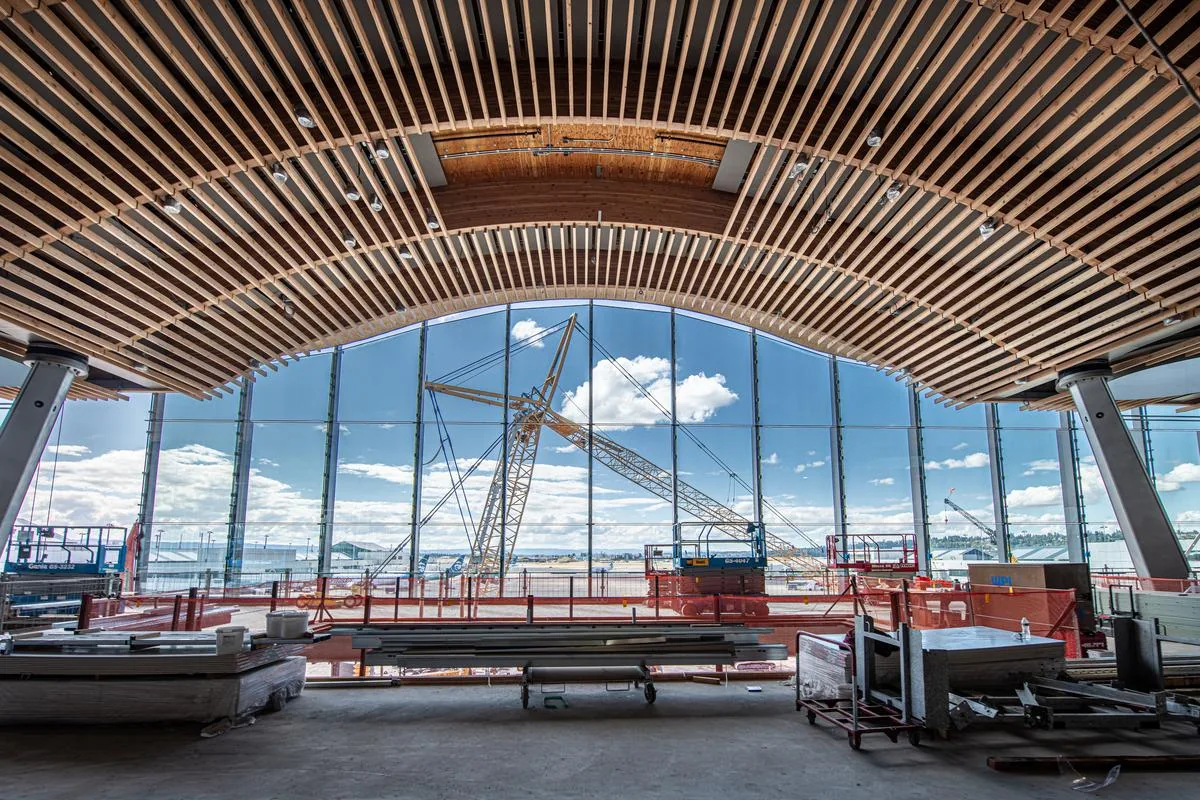
reasonstobecheerful.world
The Portland Airport’s Astonishing New Roof Tells a Local Timber Story
When passengers pass through the newly remodeled Portland International Airport in spring 2024‚ they’ll be able to point up to specific Douglas fir beams around the oval skylights and know that they came from the ancestral lands of the Coquille Tribe in Southwestern Oregon.Â
This will be the first major US airport to have a mass timber roof‚Â and all the timber for the project came from sustainably managed forests that are located less than 300 miles away. The soaring‚ nine-acre ceiling — which will have lots of natural sunlight streaming in through the skylights and windows — will feel a bit like a forest. (The renovation will also include the addition of 70 or so living trees that will be growing in recessed and above-ground planters.)Â
The process of sourcing the wood took six years of planning‚ research‚ forest visits and many‚ many phone calls between the Port of Portland‚ Portland-based ZGF Architects‚ regional tribes‚ family-run forests‚ mill owners and brokers.
All the wood for the nine-acre ceiling came from within 300 miles of the airport. Courtesy of Port of Portland
When ZGF principal Jacob Dunn joined the firm in 2017‚ his colleagues were already considering going with an all-wood roof. The Port of Portland‚ the public authority that oversees the airport and marine terminals in Portland‚ loved the idea. “The Port’s mandate was: We want it to be a mass timber roof. We’re the front door to the region‚ we really want to showcase this industry that is critical to managing and stewarding one of our region’s most precious natural resources‚” recalls Dunn‚ who is ZGF’s sustainability lead for the PDX airport project.
The Port of Portland also wanted the roof to be the most sustainable version of a mass timber roof that it could possibly be — which meant traceability. “Most of the voices in the room said‚ ‘That can’t be done‚ that’s not the way the industry works‚’” Ryan Temple‚ founder and owner of Sustainable Northwest Wood recalls. He was one of a handful of people who said that not only was it possible‚ it might even help redefine the timber industry — by making timber more traceable. He saw the project as a chance to identify and celebrate the people who are sustainably managing their forestland.
Ryan Temple. Courtesy of Port of Portland
This ambitious goal meant that Dunn’s first task was to figure out the answer to a big question: “What is sustainable forestry?” He knew that the supply chains that come with concrete and steel are resource- and energy-intensive. (Steel relies on either mining or melting down existing steel; concrete‚ which is made of cement‚ comes from mining and heating limestone and other materials to high temperatures‚ which releases large amounts of CO2 into the atmosphere.) With wood‚ there was an opportunity to find regional landowners who practice regenerative and restorative forestry. Â
The post The Portland Airport’s Astonishing New Roof Tells a Local Timber Story appeared first on Reasons to be Cheerful.










